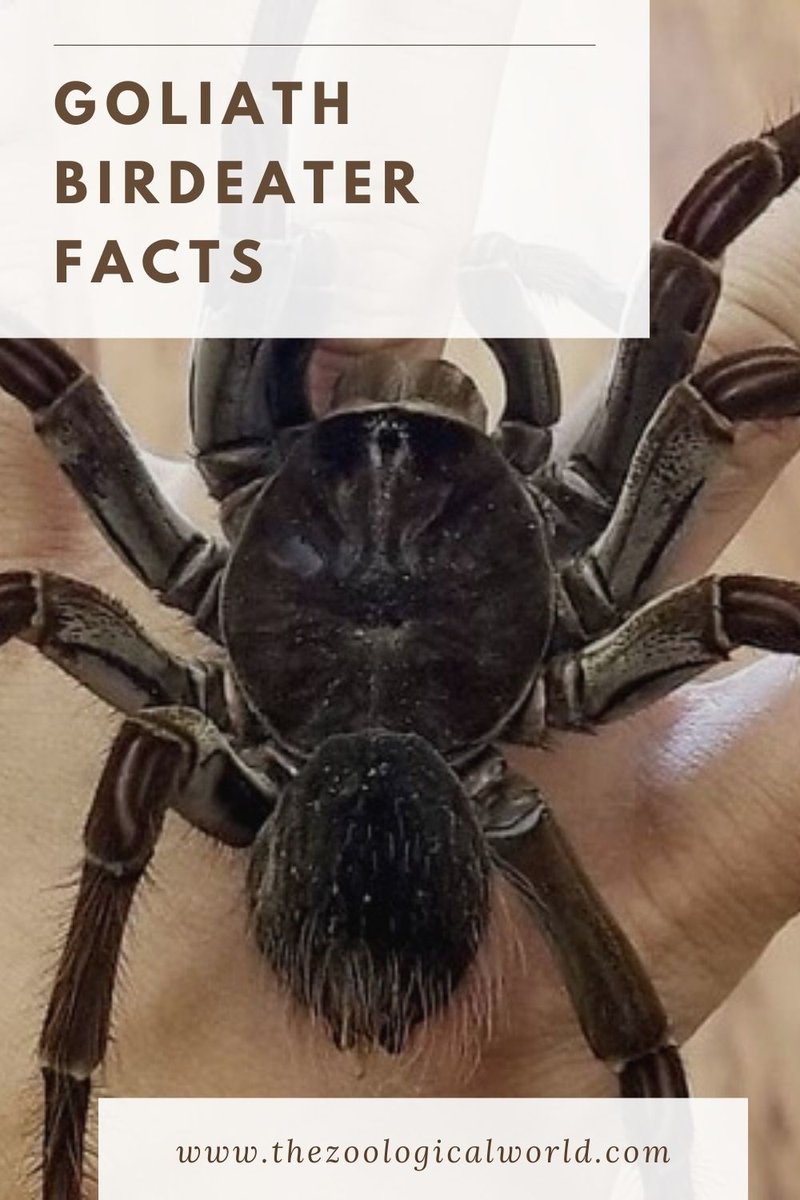
You might be wondering how something so large can exist in the wild. Well, the Goliath birdeater, found mostly in the rainforests of South America, lives in a habitat that supports its massive size and unique lifestyle. This spider is as fascinating as it is formidable. So, settle in, and let’s dive into some interesting facts that will change the way you think about spiders.
1. Size and Appearance
You won’t believe this, but the Goliath birdeater can measure up to 12 inches across when it spreads its legs! That’s about the same as a small laptop or a medium-sized dog. Its body, covered in a layer of soft hairs, can be quite fluffy, giving it a somewhat cute—if not slightly scary—appearance. Imagine coming across something that big while hiking in the jungle; it would be a moment to remember!
What’s more, these spiders can weigh over 3 ounces, which is fairly hefty for an arachnid. In fact, they’re considered the largest spider in the world by mass. Their legs, which can reach lengths of up to 5 inches, help them move gracefully despite their size, though some people might describe it more as “creeping” than “moving gracefully.”
2. Diet and Hunting Habits
Here’s where it gets even more interesting. The Goliath birdeater isn’t actually out hunting birds, despite its name. They primarily feed on insects, frogs, and even small mammals. Yes, you read that right! It’s not uncommon for them to catch and eat small rodents. Their hunting technique is fascinating; they often ambush their prey rather than chase it down. Imagine a big cat, lurking and waiting for the right moment to pounce—that’s how the Goliath operates.
When they do capture prey, they use their strong fangs to inject venom, paralyzing their meal almost instantly. And if you were to see this in action, it might look like a scene from a nature documentary. Honestly, the Goliath birdeater is a skilled predator in its own right.
3. Habitats and Distribution
Goliath birdeaters make their homes in the rainforests of South America, particularly in countries like Brazil, Suriname, and French Guiana. They are a ground-dwelling species, preferring to stay close to the earth. They dig burrows in the ground where they can hide and rest. Just picture a cozy little spider cave—it’s where they feel safest from predators.
These habitats are crucial for their survival. Rainforests provide the warmth and moisture these spiders thrive on, along with ample food sources. However, habitat loss due to deforestation poses significant threats to their survival. It’s a tough world out there for such a remarkable creature!
4. Defense Mechanisms
What happens if something tries to mess with a Goliath birdeater? Well, they have some pretty nifty tricks up their sleeve. When threatened, they can lift their front legs and show off their impressive size. It’s like a spider version of a peacock displaying its feathers! But that’s not all; they can also release tiny hairs from their abdomen, which irritate the skin of any potential attackers. This is a common defense mechanism in many spiders, but the Goliath does it with a level of flair.
You might think they would rely solely on their size to scare away predators, but this multi-tiered defense strategy is quite effective. It’s a great example of how even the largest creatures have to be careful in the wild.
5. Reproduction and Lifespan
When it comes to reproduction, Goliath birdeaters have a very interesting life cycle. Females are significantly larger than males, which is quite common in the spider world. After mating, the female can lay up to 200 eggs in a silk sac. She fiercely guards her eggs until they hatch. Imagine a mama bear protecting her cubs; that’s the level of care we’re talking about.
As for their lifespan, females can live up to 15 years, while males generally have a shorter life, averaging around 3 to 6 years. This difference in lifespan is another example of how species can have different life strategies. The longer-lived females ensure that the next generation of Goliaths can thrive!
6. Cultural Significance
In some cultures, the Goliath birdeater is seen as a thrilling source of local folklore. They sometimes appear in myths and stories meant to teach lessons about fear and bravery. In some parts of South America, people even consume them as a delicacy. You might find them grilled or fried, and yes, they can be quite crunchy. It’s not for everyone, but it does showcase how different cultures interact with nature.
The Goliath is more than just an oversized spider. It’s a creature that evokes a mix of fear, respect, and curiosity. People’s reactions to them can range from fascination to outright revulsion. However, learning about their role in the ecosystem helps build appreciation and understanding.
7. Goliath Birdeater in Captivity
You might be curious about keeping a Goliath birdeater as a pet. While it can be done, these spiders require specific care. They need a warm environment with plenty of humidity, mimicking their natural habitat as much as possible. This isn’t a pet for everyone, as they can be challenging to handle. Remember, they’re not cuddly companions like a cat or dog!
If you’re set on caring for one, you’ll need to provide them with a large enough enclosure, along with hiding spots and plenty of food. It’s a fascinating journey, but you have to be ready to respect their wild nature. Keeping one in captivity can help with education and awareness about these incredible creatures.
8. Fun Facts You Might Not Know
Let’s wrap things up with some quick, fun facts that’ll make you the star of your next trivia night:
- The Goliath birdeater can live without food for several weeks, thanks to its slow metabolism.
- Its scientific name, *Theraphosa blondi*, is a nod to the pale coloration of its body.
- Despite their fearsome reputation, Goliath birdeaters are not aggressive unless provoked.
- They are part of the tarantula family, known for their robust builds and large size.
These unique tidbits highlight just how special the Goliath birdeater really is. They’re not just monsters hiding in the jungle; they’re a vital part of the ecosystem with their own fascinating stories.
In conclusion, the Goliath birdeater is a complex and intriguing creature that challenges our perceptions of spiders. From its astounding size and adaptable lifestyle to its crucial role in maintaining the balance of its ecosystem, there’s so much to appreciate about this hairy giant. Next time you hear someone talk about spiders, remember the Goliath birdeater and the world it represents—a world that’s full of mystery and wonder.

